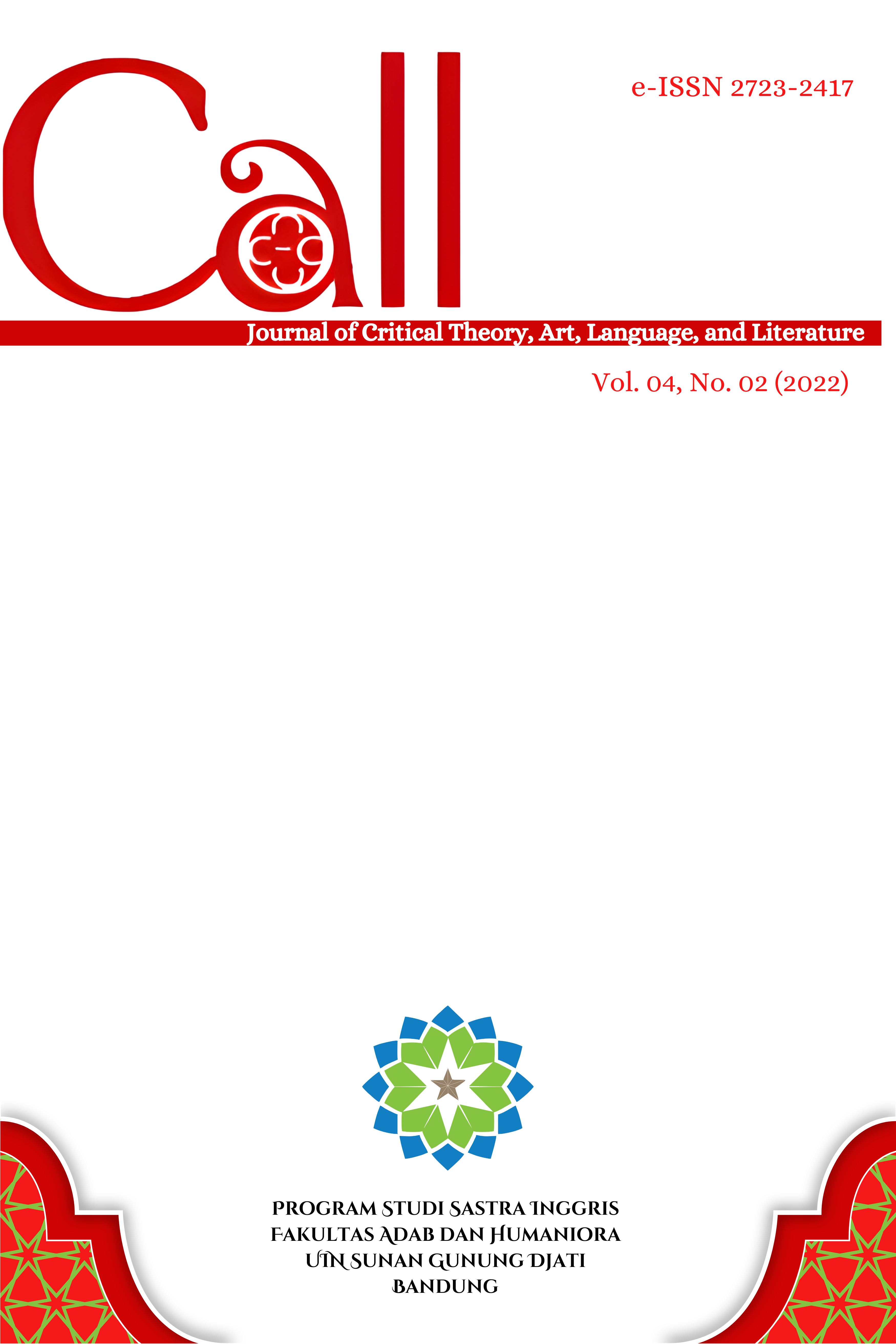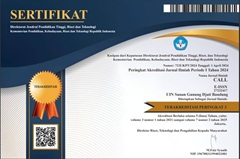WEALTH AND POWER IN THE NOVEL PRIDE AND PREJUDICE BY JANE AUSTEN
DOI:
https://doi.org/10.15575/call.v4i2.14767Abstract
The problem of social class becomes a unique object which would be discovered in the novel Pride and Prejudice. The study aimed to determine the influence of social class on British society and represent the reflection of social class in British society in the novel. A method used in this research was qualitative descriptive. Data that were collected were in the form of narration and dialogue in the novel Pride and Prejudice. Furthermore, this study used the Marxist concept (1995:25) to analyse the data. The findings of this research were the discovery of the impact of social class on British society in the novel Pride and Prejudice, namely Pride and Prejudice as the title in the novel and the invention of the forms of social class which can be found in the novel Pride and Prejudice, such as status, wealth, and power.
Â
Keywords: Marxist Theory, Jane Austen, Pride and Prejudice, social classReferences
Agustya, A. (2019). Perilaku Elizabeth dalam Novel Pride and Prejudice karya Jane Austen. Adhum: Jurnal Penelitian Dan Pengembangan Ilmu Administrasi Dan Humaniora, 9(2), 62–68.
Asmarani, R. (2013). Analisis terhadap tiga pasangan muda dalam Pride and Prejudice Karya Jane Austen dari perspektif psikoanalisis. HUMANIKA, 17(1).
Austen, J. (2001). Pride and Prejudice. Broadview Press.
Barber, B. (1961). Family status, local-community status, and social stratification: three types of social ranking. Pacific Sociological Review, 4(1), 3–10.
Bendix, R. (1998). Max Weber: an intellectual portrait (Vol. 2). Psychology Press.
Glaymann, B. (2004). Social Stratification: Class, Race, and Gender in Sociological Perspective. (2nd ed.). Westview Press.
Heaverly, A., & EWK, E. N. (2020). Jane Austen’s view on the industrial Revolution in Pride and Prejudice. Linguistics and Literature Journal, 1(1), 1–6.
Husain, S. W. J. (2020). Pembentukan posisi perempuan dalam Novel ‘Pride and Prejudice’ Karya Jane Austen. Buana Gender: Jurnal Studi Gender Dan Anak, 5(1), 27–37.
Loindong, P. C. (2013). Gambaran masyarakat Inggris dalam Pride and Prejudice: suatu analisis sosiologi sastra. Jurnal Elektronik Fakultas Sastra Universitas Sam Ratulangi, 1(1).
Made, P. N., Jayantini, I. G. A. S., & Resen, I. W. (2021). Exploring characterization of main characters: Elizabeth and Darcy in Pride and Prejudice. ELYSIAN JOURNAL: English Literature, Linguistics and Translation Studies, 1(1), 104–113.
Moleong, L. J. (2005). Metode Penelitian Kualitatif Cet. 21. Bandung: Rosda Karya.
Pont, A. (1986). Pandangan Jane Austen Tentang Masyarakat Di lihat dari Sudut Pandang Pemeran Utama Wanita dalam Novel Pride and Prejudice. Manado: Fakultas Sastra, Universitas Sam Ratulangi.
RUGIAN, I. P. (2014). Pengaruh keluarga terhadap perilaku Tuan Darcy dan Elizabeth Bennet dalam Novel Pride and Prejudice (Pendekatan Psikologi). Jurnal Elektronik Fakultas Sastra Universitas Sam Ratulangi, 3(1).
Singgih, D. S. (2010). Prosedur analisis stratifikasi sosial dalam perspektif sosiologi. Masyarakat Kebudayaan Dan Politik Unair, 20(1).
Taylor, B. (2012). Understanding the element of life. In Physics World (Vol. 25, Issue 03). Longman.
Wellek, R., & Warren, A. (1956). Theory of literature. Harcourt, Brace & World New York.
Downloads
Published
Issue
Section
Citation Check
License
Authors who publish in CALL agree to the following terms:
- Authors retain copyright and grant the journal right of first publication with the work simultaneously licensed under Attribution-ShareAlike 4.0 International (CC BY-SA 4.0) License that allows others to share the work with an acknowledgment of the work's authorship and initial publication in this journal.
- Authors are able to enter into separate, additional contractual arrangements for the non-exclusive distribution of the journal's published version of the work (e.g., post it to an institutional repository or publish it in a book), with an acknowledgment of its initial publication in this journal.
- Authors are permitted and encouraged to post their work online (e.g., in institutional repositories or on their website) prior to and during the submission process, as it can lead to productive exchanges, as well as earlier and greater citation of published work (See The Effect of Open Access).




